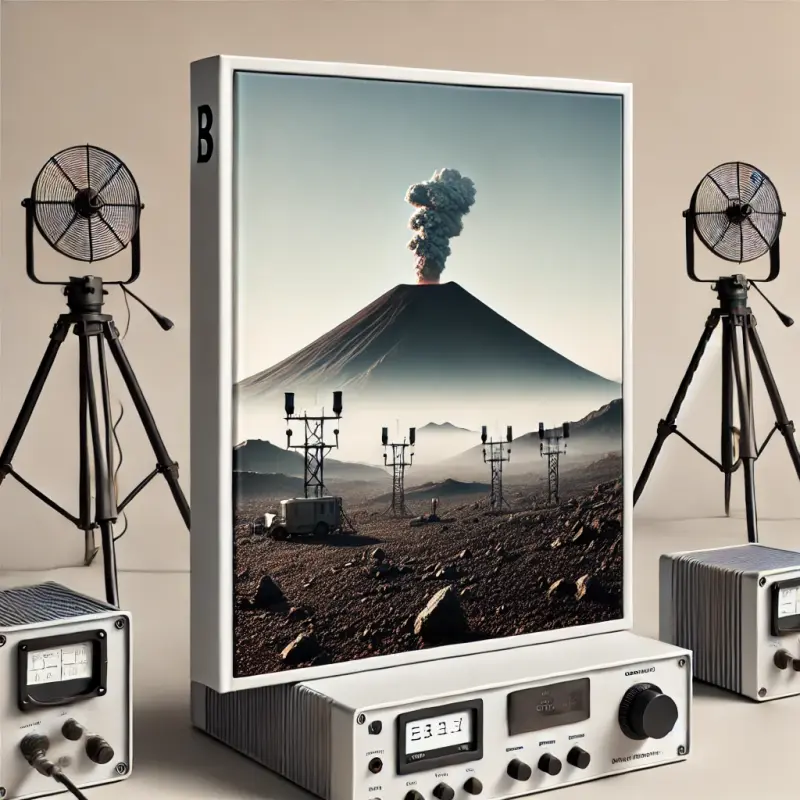Emerging Technologies in Volcanic Activity Management: How Innovation Reduces Eruption Risks
Volcanic eruptions are among nature’s most unpredictable and potentially devastating events. Recent advancements in technology have introduced innovative ways to monitor volcanic activity, helping scientists better predict eruptions and mitigate associated risks. Modern systems combine traditional methods with cutting-edge digital tools to monitor volcanic activity more precisely and respond more efficiently. This article delves into how these advanced systems work and the role of emerging technology in improving volcanic risk management.

Understanding Volcanic Risks and Activity
Volcanoes form through tectonic processes, and their eruptions vary in intensity, timing, and impacts. Volcanic eruptions release a range of materials, including ash, gases, and lava, which can harm ecosystems, disrupt air travel, and even alter climate patterns. This has made early detection and effective risk management critical, especially for communities located near active volcanoes.
Key Technological Developments in Volcanic Monitoring
Modern volcanic monitoring employs an array of technologies that collect and analyze data to provide real-time insights into volcanic activity. Here are some of the most significant innovations shaping this field:
1. Seismic Monitoring Systems
Seismic monitoring has long been a fundamental tool for understanding volcanic behavior. By tracking the seismic waves caused by magma movement within a volcano, scientists can detect patterns that may indicate an impending eruption. These systems include:
- Seismographs: Sensitive devices that measure ground vibrations and help monitor magma activity below the earth’s surface.
- Dense Sensor Networks: A series of sensors spread around a volcano to capture even the subtlest shifts in seismic activity, enhancing prediction accuracy.
2. Satellite Remote Sensing
Satellites have significantly advanced volcanic monitoring, enabling scientists to observe volcanic changes from space. Satellite imaging and sensing allow for continuous, large-scale monitoring of remote volcanoes that may otherwise be difficult to access. Key remote sensing tools include:
- Infrared Imaging: Used to detect thermal anomalies and temperature changes in a volcano, which can indicate magma movement.
- Synthetic Aperture Radar (SAR): Captures high-resolution images of a volcano’s surface, allowing scientists to measure ground deformation that often precedes eruptions.
3. Gas Emission Monitoring
Changes in gas emissions are critical indicators of volcanic activity. Volcanologists use several techniques to measure the release of gases like sulfur dioxide (SO₂) and carbon dioxide (CO₂), both of which increase as magma rises closer to the surface. Technologies used for gas emission monitoring include:
- Mobile Gas Analyzers: Portable devices placed near volcanic vents to provide real-time gas measurements.
- Unmanned Aerial Vehicles (UAVs): Drones equipped with sensors that can safely reach volcanic vents, capturing detailed gas emission data.
4. Ground Deformation Analysis
The deformation, or shifting, of ground surfaces around a volcano often signals changes within the magma chamber below. By measuring even the slightest changes in a volcano's shape, scientists can infer magma activity. Technologies in this area include:
- GPS Monitoring: High-precision GPS stations are placed around a volcano to detect minute ground movements, providing data on pressure changes within the magma chamber.
- InSAR (Interferometric Synthetic Aperture Radar): This satellite-based technology measures surface deformation over time, helping to identify signs of potential eruption.
Advanced Early Warning Systems and Data Processing
Data collected from these monitoring methods is integrated into advanced early warning systems, enhancing prediction accuracy and response times. These systems rely on powerful algorithms, machine learning, and AI to analyze vast datasets, allowing scientists to model eruption scenarios and improve response strategies.
Machine Learning and Predictive Analytics
Predictive analytics powered by machine learning has transformed volcanic monitoring by analyzing historical and real-time data to predict eruption likelihood. Machine learning algorithms can detect patterns that human observation alone might miss, helping scientists establish early warning benchmarks for different types of volcanic activity.
Artificial Intelligence (AI) in Monitoring and Response
AI assists in processing massive amounts of monitoring data, from seismic records to satellite images. By continuously analyzing this data, AI can quickly detect any unusual patterns and issue alerts to authorities. Some AI models can also simulate eruption scenarios based on real-time conditions, enabling scientists to better plan evacuation routes and resource allocation.
Challenges in Volcanic Monitoring and the Role of New Technologies
Despite advancements, predicting volcanic eruptions remains complex. Volcanoes are dynamic and can behave unpredictably, making consistent and precise monitoring challenging. Some of the ongoing challenges in this area include:
- Data Integration: Collecting data from multiple sources requires careful integration and validation to ensure accuracy.
- Remote Access: Some volcanoes are located in extremely remote areas, making it difficult to maintain equipment.
- Resource Constraints: Monitoring systems are costly to deploy and maintain, often requiring significant financial and human resources.
Innovative technologies such as UAVs and satellite monitoring address some of these challenges by providing new ways to access hard-to-reach areas and process data more efficiently.
Future Directions: Towards More Resilient Volcanic Management
The field of volcanic monitoring is poised for further innovation. Researchers are exploring the use of quantum sensors, which could potentially detect magma movements with unparalleled precision. Additionally, global networks for volcanic data sharing are expanding, fostering greater collaboration between countries and scientific organizations.
In the future, we can expect enhanced early warning systems that incorporate diverse data streams, from seismic and gas data to real-time atmospheric monitoring. These improvements will likely lead to more accurate predictions, reducing eruption impacts on both local communities and the global environment.
Conclusion
Technological advancements are revolutionizing the way scientists monitor and respond to volcanic activity. From satellite imaging to AI-powered analytics, these innovations provide invaluable tools that help mitigate the risks associated with volcanic eruptions. As these technologies continue to evolve, they promise to improve prediction accuracy, protect lives, and preserve ecosystems at risk from one of Earth’s most formidable natural forces.
Articles
Subscribe to our notifications to receive the latest and most interesting articles directly in your inbox.